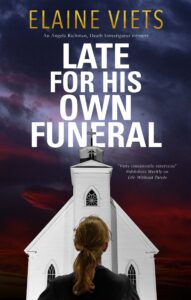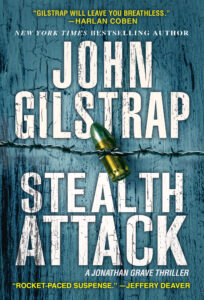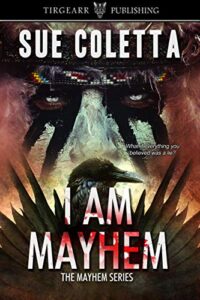Happy New Year, and welcome to the first Words of Wisdom post of 2023. For me, finding time to write, using that time, as well as wanting to sustain that creativity throughout the year and beyond, is very much on my mind right now. Not only that, but figuring out how better to deal with various tasks and schedule what time you have to write.
So, I searched through the Kill Zone archives for January posts dealing with this and found gold. Three posts, which turned out to be spaced three years apart.
From January 2014, James Scott Bell gives advice on being creative throughout your life. Then, from January 2017 Joe Hartlaub tackles the challenge of time balance and gives some great tips. Finally, from January 2020 Elaine Viets discusses finding your most creative time and how to hew to that. I link to the full posts at the end of each excerpt, and all are worth reading in full.

Fight to be creative as long as you live. Do it this way:
- Always have at least three projects going
I wrote about this before (“The Asimov“). I think all writers should, at a minimum, have three projects on the burner: their Work-in-Progress; a secondary project that will become the WIP when the first is completed; and one or more projects “in development” (notes, concepts, ideas, character profiles, etc.). This way your mind is not stuck in one place.
- Take care of your body
The writer’s mind is housed in the body, so do what you have to do to keep the house in shape. Start small if you have to. Eat an apple every day. Drink more water. Walk with a small notebook and pen, ready to jot notes and ideas.
- Stay positive and productive
Write something every day. Even if it’s just journaling. Know that what you write to completion will see publication, guaranteed. It may be via a contract, like Herman Wouk. Or it may be digitally self-published. Heck, it could be a limited printing of a memoir, just for your family. Writers write with more joy when they know they will be read, and joy is the key to memorable prose.
- Do not go gentle into that good night
Write, write against the dying of the light! (apologies to Dylan Thomas). Refuse to believe you have diminished powers or have in any way lost the spark that compelled you to write in the first place. If they tell you that you just don’t have it anymore, throw your teeth at them. Who gets to decide if you can write? You do. And your answer is, I’ve still got it, baby, and I’m going to show you with this next story of mine!
So just keep writing and never decompose.
James Scott Bell—January 19, 2014
Writers are faced with this time balance on a daily, if not hourly, basis. Life gets in the way of writing. Heck, life gets in the way of life. My way of dealing with this has never been perfect and is constantly evolving. I am accordingly going to share with you my current method for coping with the time crunch, which, as I approach the downhill slope of my life, actually works pretty well.
1) Eat the booger first. That got your attention, didn’t it? The “booger” in this case is the task you want to do least. It can be anything from emptying the dishwasher to drafting that letter that contains bad news for the recipient. Do that first. Do it as soon as you get the bad news that you have been appointed to pass on. Do it when the dishwasher light goes on, or it buzzes, or whatever. I have found in most cases that the freakin’ idea of whatever it is you need to do but don’t want to is often worse than actually doing it.
2) List your Big Four. List four things which you try to do every day, regardless of what else happens. Put them in your calendar (on daily repeat) at the beginning of your day. Assign one word to each task — Watch, Read, Write, and Listen, for example — and do each of those things for fifteen minutes each day. If you want to keep doing them, fine, but the first time that you start each one be sure to stop after fifteen minutes. Come back to each one later, if you wish and if you can, but again, in fifteen minute increments. Do it with tasks that you want or have to do regularly, and love or hate (or somewhere in between) , but do each for fifteen minutes at a time. You will be surprised at how long and how short a quarter-hour is, and how much you can get done in that time period. This is particularly true of writing. Depending on your typing speed, inspiration, and perspiration, you can get a couple of hundred words out of you and on the screen in fifteen minutes. What? You say that doesn’t sound like much? Count out two hundred Skittles and throw them around the living room. Now pick them up. See. Two hundred is a lot. Do that for ten days and you have two thousand words or more, where before you had nothing. And so it goes.
3) Schedule things realistically, and adjust your expectations accordingly. It isn’t going to take you fifteen minutes to prepare your income tax return, so don’t schedule that from 10:00 to 10:15 on the night of April 14. You’ll just be making an appointment to be kissed by the goddess of disappointment. Go ahead and block off fifteen minutes for it, across twenty different days, or block off an entire day, if you can do it. You have a pretty good idea how long it takes you, however, from past experience, which is usually a pretty good indicator of present performance. But be realistic in your estimates of how long it takes you and how long you can work on it at a stretch. Think of YOUR abilities and limitations. Mickey Spillane wrote I the Jury in nineteen days, and Georges Simenon could write a book in less time than that, but you or I aren’t going to do that (probably). Don’t get discouraged when it takes longer than you thought it would, and plan accordingly.
Joe Hartlaub– January 28, 2017
2) Know your most creative time.
I get most of my writing done between 10 a.m. and 2 p.m. After that, I’ll still write, but my work often feels flat. My brain really sparks during those four peak hours. After that, it’s better for editing.
(3) Seize the time you have.
If your husband takes the kids to McDonald’s, don’t use that time to sort socks. Write!
Romance writer Joan Johnston wrote her way to the New York Times bestseller list by writing her novels between 4 and 6 a.m. – while the kids were asleep. Now, that’s dedication.
What if you have a sick spouse or ailing children – or you don’t feel so well yourself?
That’s where your own determination comes in. I’ve written novels by my husband’s bedside when he was in the hospital, and edited proofs for the next book while waiting to hear from the doctor when he was in surgery.
Am I Super Woman? Heck, no! But I can concentrate for short periods. Writing is a way to escape a painful or scary situation. It can be solace.
(4) Make time
Remember the words of that rabble-rousing journalist, Mary Heaton Vorse: “The art of writing is the art of applying the seat of the pants to the seat of the chair.” You need seat time.
Try to schedule time-sucking activities after your peak writing time. If the cat isn’t deathly ill, make her vet appointment at 4:30 p.m. The repairman – if he deigns to show up – will start the repairs after your peak writing time. And for now, I’m ignoring the squeaky dryer.
Be ruthless when you write. Turn off your cell phone. Ignore the siren call of the internet, tempting you with cat videos, unanswered emails and Kim Kardashian’s latest lingerie photo. Use that time to write.
(5) A writer writes.
Make that your mantra.
I love being a writer. I enjoy talking to other writers at the Mystery Writers of America and Sisters in Crime meetings, and hanging out with other writers in the bar at conventions.
But writing is a lonely business. Eventually, I’m going to have to go to my office, all by myself, and write. You will, too. Good luck.
Elaine Viets—January 9, 2020
***
What advice do you have on sustaining your creativity throughout the year and beyond?
How do you strike that “time balance?”
Are you making any changes to your writing schedule this month?
If you encounter a problem in posting your comment, we apologize. The Kill Zone has been dealing with a few technical difficulties, and we are working to fix the problems. Thanks for your patience and for visiting!


 By Elaine Viets
By Elaine Viets Murder seems to touch us all. When I thought about it, I realized I’d watched a murderer grow up in my city neighborhood. We lived on a shady street with big, old redbrick houses. One house, halfway down the block, was known as “the trouble house.” The police were there two or three times a week. The neighbors often called the cops on the boy, who I’ll call Billy, because that’s not his name. Billy broke windows, supposedly stole things out of yards, and may have tortured a stray cat.
Murder seems to touch us all. When I thought about it, I realized I’d watched a murderer grow up in my city neighborhood. We lived on a shady street with big, old redbrick houses. One house, halfway down the block, was known as “the trouble house.” The police were there two or three times a week. The neighbors often called the cops on the boy, who I’ll call Billy, because that’s not his name. Billy broke windows, supposedly stole things out of yards, and may have tortured a stray cat. In 2020, some 17,754 people were murdered in the USA. More than 40 people are murdered every day in the US. That statistic led to a jury room full of raised hands, and lives filled with sorrow and regret.
In 2020, some 17,754 people were murdered in the USA. More than 40 people are murdered every day in the US. That statistic led to a jury room full of raised hands, and lives filled with sorrow and regret. Late for His Own Funeral “ is a fascinating exploration of sex workers, high society, and the ways in which they feed off of one another.” — Kings River Life. Buy it here:
Late for His Own Funeral “ is a fascinating exploration of sex workers, high society, and the ways in which they feed off of one another.” — Kings River Life. Buy it here: Stealth Attack hit the stands in July, 2020, which means I wrote it in 2019. When I read the email, I was confused. I couldn’t remember anything in that book that resembled anything that Mary Anne found so offensive. Recognizing that I am getting no younger, and that my memory isn’t necessarily as acute as it used to be, I pulled the book from my shelf and re-read Chapter 17.
Stealth Attack hit the stands in July, 2020, which means I wrote it in 2019. When I read the email, I was confused. I couldn’t remember anything in that book that resembled anything that Mary Anne found so offensive. Recognizing that I am getting no younger, and that my memory isn’t necessarily as acute as it used to be, I pulled the book from my shelf and re-read Chapter 17.

 As I tell this story, think back over your life. We’ve all gone through hard times, some worse than others. Humor me, and if you’re struggling with story structure, you’ll at least begin to grasp it by the time you’ve read this post. That’s my hope, anyway.
As I tell this story, think back over your life. We’ve all gone through hard times, some worse than others. Humor me, and if you’re struggling with story structure, you’ll at least begin to grasp it by the time you’ve read this post. That’s my hope, anyway.


 In the good old days of carousels, there was a little item called the brass ring. According to
In the good old days of carousels, there was a little item called the brass ring. According to 

 What makes pufferfish so toxic is tetrodotoxin. It’s 1,200 times more powerful than potassium cyanide which the Nazis used in their poison pills. Tetrodotoxin is the world’s deadliest substance by volume next to anthrax and a chemical inside the tropical cone snail. In fact, tetrodotoxin is far more lethal than venom found in the common death adder and the notorious taipan snake. Injecting 1 microdot of pure tetrodotoxin will kill the average-sized human. That’s equivalent to 10 nanograms, which is an amount impossible to see with the naked eye.
What makes pufferfish so toxic is tetrodotoxin. It’s 1,200 times more powerful than potassium cyanide which the Nazis used in their poison pills. Tetrodotoxin is the world’s deadliest substance by volume next to anthrax and a chemical inside the tropical cone snail. In fact, tetrodotoxin is far more lethal than venom found in the common death adder and the notorious taipan snake. Injecting 1 microdot of pure tetrodotoxin will kill the average-sized human. That’s equivalent to 10 nanograms, which is an amount impossible to see with the naked eye. Rather, tetrodotoxin is a by-product made by invasive bacteria that pufferfish ingest in their food. Snails are the main part of pufferfish diet. These subtle sea creatures contain a combination of alteromona, shewanella, and vibrio bacteria which react with pufferfish innards to isolate tetrodotoxin. Evolution created a pufferfish immunity to the toxin where sodium channels are mutated. This is why the bacterial doesn’t kill its host.
Rather, tetrodotoxin is a by-product made by invasive bacteria that pufferfish ingest in their food. Snails are the main part of pufferfish diet. These subtle sea creatures contain a combination of alteromona, shewanella, and vibrio bacteria which react with pufferfish innards to isolate tetrodotoxin. Evolution created a pufferfish immunity to the toxin where sodium channels are mutated. This is why the bacterial doesn’t kill its host.
 The Japanese have fugu down to an art form. Not only are fugu chefs trained not to poison customers, they’re skilled at delighting guests who will pay $200-300 USD for a fugu dinner. Most fugu is sliced as ultra-thin shimini wafers and accompanied with sushi rice rolls and sauces. This is expected, but the presentation can be breathtaking.
The Japanese have fugu down to an art form. Not only are fugu chefs trained not to poison customers, they’re skilled at delighting guests who will pay $200-300 USD for a fugu dinner. Most fugu is sliced as ultra-thin shimini wafers and accompanied with sushi rice rolls and sauces. This is expected, but the presentation can be breathtaking.